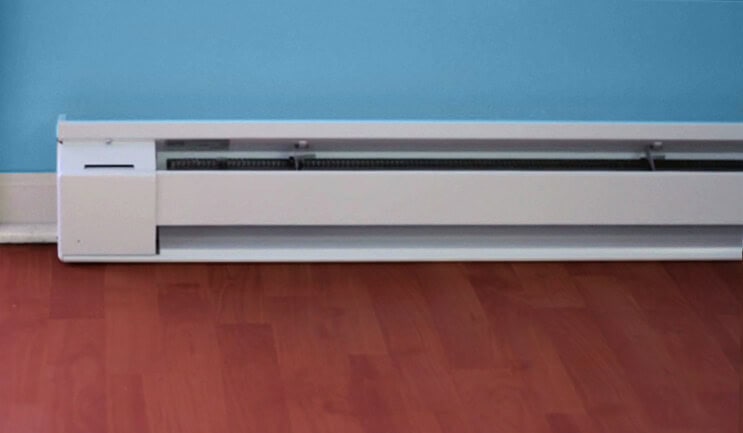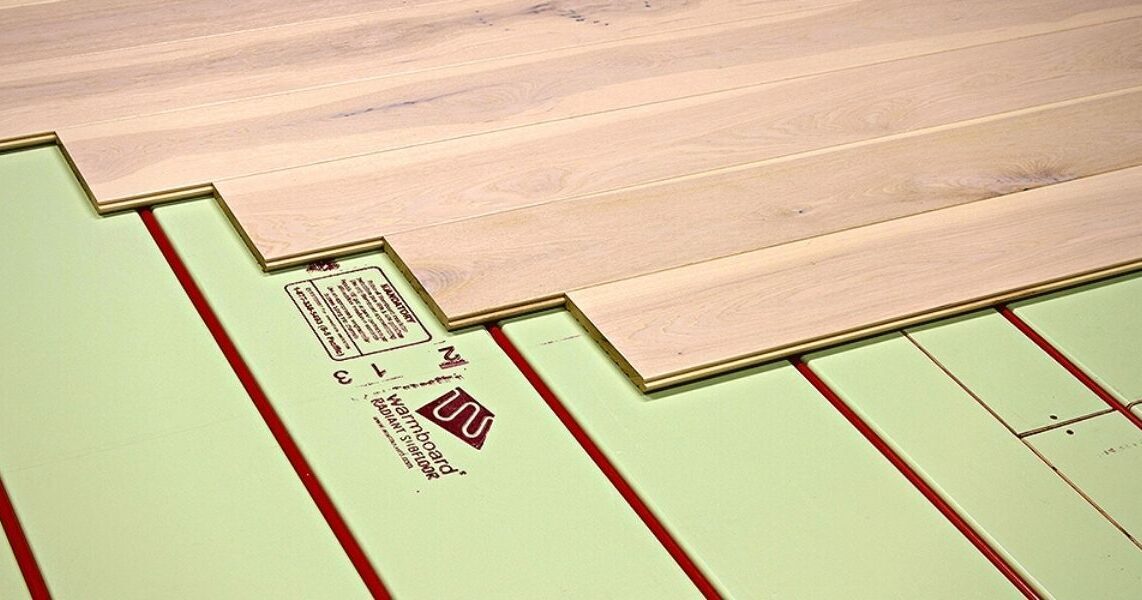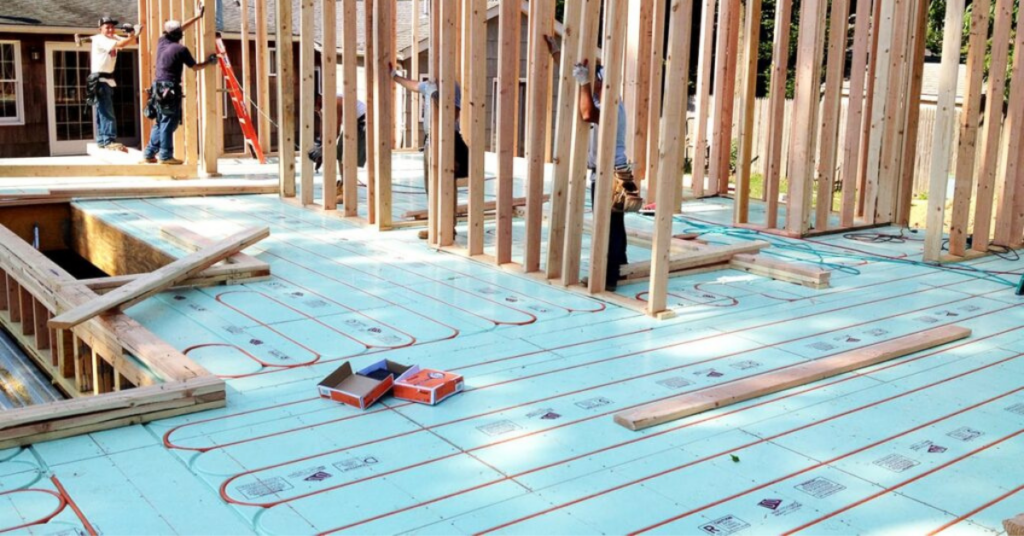Choosing the right heating system for your home is a significant decision that impacts comfort, energy efficiency, and overall home value. Whether you’re building a new home or remodeling an existing one, it’s essential to explore the various options available. In this guide, we’ll delve into the different types of heating systems, emphasizing the benefits of hydronic radiant heating.
Understanding your Heating Needs
With advancements in technology, increased awareness of environmental impact, and rising energy costs, it’s essential to understand your unique heating requirements to make informed decisions. Before selecting a heating system, consider the following factors:
- Home size and layout: Larger homes may require more powerful systems.
- Climate: Cold climates demand efficient heating solutions.
- Energy efficiency: Prioritize systems with lower energy consumption.
- Budget: Factor in not only product cost, but installation and operating expenses as well.
- Comfort preferences: Consider factors like even heat distribution and quiet operation.
Types of Home Heating Systems
With a variety of options available, understanding the pros and cons of each heating system type can help you make an informed choice. These are the most common types of heating systems available in the market:
1. Forced Air Systems
- How it works: A furnace heats air, which is then distributed throughout the home using a system of ductwork.
- Pros: Overwhelmingly the most common type of heating in North America. Typically affordable to install, versatile, can also be used for cooling with air conditioning which can use the same ductwork.
- Cons: Uneven heating, lack of control over different areas of the home, potential for dry air, expensive to operate, noisy, ductwork can be a source of allergens and dust.
2. Radiant
- How it works: Heats objects directly, rather than air.
- Pros: According to energy.gov, radiant is a more efficient way to heat your home than traditional systems. Energy efficient, improved indoor air quality (IAQ) and quiet operation.
- Cons: More expensive to install, may require professional installation.
- Types of Radiant Heat: It is generally done through baseboards or through the floor. These methods can be either hydronic (water-based) or electric.
2.1. Baseboard
Radiant baseboard heaters are heating devices that use either electric elements or hot water, to heat a baseboard. The baseboard, in turn, emits the heat waves into the given space. These give direct warmth to objects rather than heating the air first, hence making the resultant heating consistent and comfortable. In most cases, people tend to like radiant baseboard heating because it provides zoned heating in a room.
2.1.1. Electric Baseboard Heaters
- How it works: Electric baseboard heaters use electric elements to heat a metal plate or fin. This heated surface then radiates heat into the surrounding air.
- Pros: Easy to install, provides localized heat control.
- Cons: Can be less energy efficient than other heating methods, especially in larger spaces. The units themselves can be aesthetically unappealing.

2.1.2. Hydronic Baseboard Heaters
- How it works: Hydronic baseboard heaters use hot water circulated through pipes within the baseboard. The heated water warms the baseboard, which then radiates heat into the surrounding air.
- Pros: Can be more energy efficient than electric baseboard heaters, especially when connected to a geothermal heat source or a high-efficiency boiler. Provides localized heat control.
- Cons: Can be more complex to install, as it requires a piping system and a heat source. The baseboard units themselves can be aesthetically unappealing.
2.2. Radiant Floors
Radiant floor heating systems offer a comfortable and efficient alternative to traditional forced-air heating systems. Unlike forced-air systems that heat the air and then distribute it throughout the space, radiant floor heating systems emit heat directly from the floor, warming objects and surfaces rather than the air. This method provides a more even and comfortable heat distribution, reducing cold drafts and creating a more pleasant indoor environment.
- Pros: Extremely energy efficient, even heat distribution, zone controlled. Typically used throughout an entire home as the primary heat source.
- Cons: Generally inappropriate for small areas. High installation costs, requires professional installation.
- Types of Radiant Floor Heat: Radiant floor heating offers an efficient way to warm your home. There are two primary types: hydronic and electric.
2.2.1. Electric Radiant Floor Heating
This system involves installing electric cables embedded in the floor slab. When activated, these cables generate heat, which is then radiated upward to warm the entire space. This method is particularly suitable for homes with underfloor insulation and is often used in conjunction with other heating sources for added warmth.
- Pros: Easier and less expensive to install, generally used as a supplemental heat source in a small area such as a kitchen or bathroom. Can be used as a primary heat source in some regions.
- Cons: Typically less efficient than hydronic systems, can increase electricity bills dramatically in regions with high electricity rates and be too expensive to operate consistently.
- Types of Electric Radiant Floor Heating
- Heating Mats: Thin mats containing electric cables are placed under the flooring. Ideal for renovations or existing floors.
- Heating Cables: Individual cables can be installed in concrete slabs for new construction.
- Radiant Heat Film: A thin, flexible film with embedded heating elements is installed under the floor.
2.2.2. Hydronic Radiant Floor Heating
Radiant floor heating systems offer a comfortable and efficient way to heat homes. A boiler heats water, which is then circulated through a network of pipes embedded in the floor slab. As the warm water flows through the pipes, it heats the surrounding concrete. This heated concrete then radiates heat upward, warming the entire space evenly. This method of heating provides a gentle and consistent warmth, eliminating cold drafts and creating a comfortable ambiance throughout the home.
- Pros: Extremely energy efficient, even heat distribution, zone controlled. Typically used throughout an entire home as the primary heat source.
- Cons: Generally inappropriate for small areas. High installation costs, requires professional installation.
- Installation methods:
- Method 1: High Mass
Traditionally tubing has been placed in the concrete slab of a house. The system can be zoned, operates silently and brings incredible comfort. The downside however is extremely slow response to changing needs and higher energy costs when compared to radiant panels. - Method 2: Radiant Panels
Radiant panels have been increasing in popularity over the past 20+ years. They are typically made of wood, and many implement an aluminum component to help hasten heat transfer. Radiant panels offer greater flexibility with installation and can lend themselves to wall or ceiling installations.
- Method 1: High Mass
Why Hydronic Radiant Floor Heating is the best choice
Hydronic radiant floor heating systems, like those offered by Warmboard, are often considered the best choice over other heating systems for residential homes for several compelling reasons.
- Even Heat Distribution: Radiant floor heat warms objects directly, creating a comfortable and consistent temperature throughout your entire home, room by room.
- Energy Efficiency: Water’s heat transfer efficiency is remarkably higher than air’s, at a ratio of 23.5 to 1.
- Long term savings: Compare heating bills and note potential to save $ hundreds every month for the life of the home.
- Improved Indoor Air Quality: By eliminating the reliance ductwork, radiant heating prevents the endless circulation of dust, dust mites and allergens. Dramatic improvements in IAQ.
- Quiet Operation: Enjoy peaceful warmth without the noise of fans or blowers, day and night. A more tranquil home and more restful sleep.
- Versatile Installation: Warmboard can be installed in new or existing homes or additions, offering flexibility for virtually any floor types.
- Less Maintenance: With proper installation and maintenance, radiant heating systems can last for decades.
How to upgrade your Home Comfort?
Choosing the right heating system is crucial for your home’s comfort and energy efficiency. But also consider a lifetime of energy savings, better sleep and other health benefits. More money now, substantial savings over life of home. By carefully considering your needs and exploring options like hydronic radiant heating, you can make an informed decision that will benefit you for years to come.
Warmboard Comfort System: The Ultimate Radiant Heating Solution
Our Warmboard Comfort System is a cutting-edge hydronic radiant heating system that delivers exceptional performance and comfort. Its unique design and advanced technology provide unmatched heat distribution, energy efficiency, and durability.
- Customizable Solutions: Warmboard offers various options to fit your specific needs and preferences. Available for multiple fuel sources, zoning control, wireless controls, and more.
- Ease of Transaction: Maybe ease of order – one company handling everything, designed to work end-to-end, one project manager. Convenient shipping to time when you need it. Comprehensive install instructions.
- Easy Installation: Professional installers can efficiently install Warmboard in your home. With lower labor costs and faster install time.
Contact us today to learn more about how our radiant heating systems can transform your home into a warm and inviting sanctuary.
FAQs About Types of Heating Systems
Q: What are the main types of heating systems?
A: The primary types of heating systems include:
- Forced air furnaces
- Radiant heating (electric or hydronic)
- Baseboard heaters (electric or hydronic)
Q: How do I choose the right heating system for my home?
A: Factors to consider include:
- Climate
- Home size and layout
- Budget
- Energy efficiency
- Desired comfort level
- Other health or sensory considerations
Q: How often should I maintain my heating system?
A: Regular maintenance is crucial for optimal performance and longevity. Most HVAC professionals recommend annual inspections and tune-ups.
Q: What are the signs of a failing heating system?
A: Common signs of a failing heating system might include:
- Unusual noises
- Inconsistent heating
- High energy bills
- Frequent breakdowns
- Short cycling
Read more FAQs here

